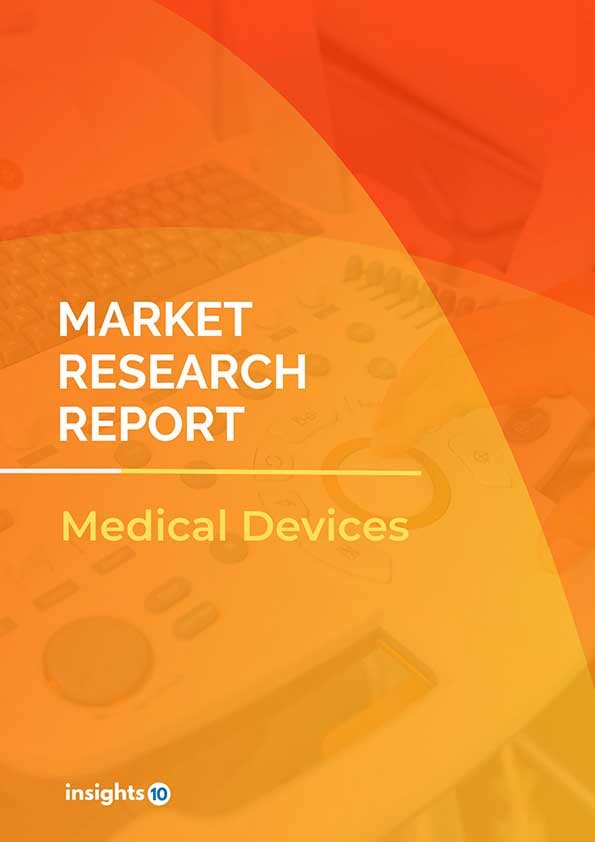Indonesia Cardiac Surgery Instruments Market Analysis
Indonesia's Cardiac Surgery Instruments Market is expected to witness growth from $12 Mn in 2022 to $21 Mn in 2030 with a CAGR of 6.60% for the forecasted year 2022-2030. Heart disease is the leading cause of death in Indonesia, accounting for 28.56% of all fatalities, which is driving up demand for cardiac surgery equipment in the Indonesian healthcare market. The market is segmented by type, application and by the end user. Some key players in this market include PT. Oneject Indonesia, PT. Provital Perdana, LivaNova, B. Braun, Medline Industries, KLS Martin, and STILLE.
Buy Now

Indonesia Cardiac Surgery Instruments Healthcare Market Executive Analysis
Indonesia's Cardiac Surgery Instruments Market is expected to witness growth from $12 Mn in 2022 to $21 Mn in 2030 with a CAGR of 6.60% for the forecasted year 2022-30. Indonesia is projected to spend $30.18 billion more on healthcare between 2022 and 2028. In 2028, $69.3 billion in spending is anticipated. Indonesia is regarded as such as a recent industrialising nation with a middle income. It is the seventh-largest economy in the world in terms of GDP and ranks 17th in terms of nominal GDP. By 2025, the estimated $40 billion Internet economy for Indonesia is predicted to reach $130 billion.
Cardiovascular disease is a significant public health issue and one of the leading causes of mortality and morbidity in Indonesia. With about 30% of all fatalities attributable to it, cardiovascular disease is the primary killer in the country. Indonesia has a higher prevalence of Coronary Artery Disease (CAD), a common form of heart disease that affects both males and women when compared to some other Southeast Asian nations. In Indonesia, 11% of people have CAD. During operations, tools created especially for cardiac surgery are used to identify, treat, and manage conditions involving the heart. These instruments are crucial to both the outcome of the operation and the field of cardiac surgery. Modern cardiac surgery tools, such as robotically assisted surgical instruments, offer surgeons greater control, dexterity, and accuracy. As a result, surgeries might go better, there might be fewer issues, and patients might heal more quickly. With the aid of cardiac surgery instruments like catheters, angiography needles, and stents, heart diseases like coronary artery disease, valve disease, and arrhythmias can be identified and treated. Cardiovascular surgery tools like laparoscopic instruments, endoscopes, and microsurgical instruments are used in minimally invasive treatments, which call for smaller incisions and less trauma to the patient. Shorter hospital stays, less pain and quicker recovery could result from this.

Market Dynamics
Market Growth Drivers
In Indonesia, due to the high death rate from heart disease (28.56% of all fatalities), which is increasing demand for cardiac surgery equipment in the country's healthcare industry. As a consequence, the market for these instruments in Indonesia is growing. The Indonesian government has increased healthcare spending, which has increased demand for contemporary medical devices, especially instruments used in cardiac surgery. Government programs to modernize the healthcare system and expand access to medical care are driving up demand even more. One of the most popular treatments in Indonesia is cardiac surgery, which attracts many medical tourists. The demand for sophisticated cardiac surgery tools is therefore increasing. With the development of minimally invasive surgical methods, robotics, and imaging technologies, the market for cardiac surgery instruments is experiencing substantial technological advancements. These advancements have increased the demand for sophisticated cardiac surgery instruments in Indonesia.
Market Restraints
In Indonesia, due to the fact that cardiac surgery instruments must be extremely specialized and exact, instruments used in cardiac surgery are more expensive. The market for manufacturers in the healthcare sector in Indonesia may be diminished if some healthcare providers cannot purchase these instruments. The fact that some regions of the nation might not have the resources or healthcare infrastructure required to support the use of cardiac surgery instruments may be a constraint on the development of the Indonesian market for cardiac surgery instruments.
Competitive Landscape
Key Players
- PT. Oneject Indonesia (ID)
- PT. Provital Perdana (ID)
- LivaNova
- B. Braun
- KLS Martin
- Medline Industries
- STILLE
Healthcare Policies and Regulatory Landscape
In Indonesia, the National Agency of Drug and Food Control (BPOM) is a regulatory body that oversees medical equipment, including tools used in heart surgery. It oversees the registration, licensing, and post-market surveillance of medical devices to guarantee their effectiveness and security. All healthcare policies in Indonesia, including those concerning the use and oversight of medical equipment, must be developed and put into effect by the Ministry of Health. (MoH). Additionally, it is in charge of regulating the accreditation of institutions that perform cardiac surgery. In order to facilitate the harmonization of medical device laws among its members, the ASEAN bloc created the ASEAN Harmonized Regulatory Scheme for Medical Devices (AHRS), which includes Indonesia.
1. Executive Summary
1.1 Device Overview
1.2 Global Scenario
1.3 Country Overview
1.4 Healthcare Scenario in Country
1.5 Regulatory Landscape for Medical Device
1.6 Health Insurance Coverage in Country
1.7 Type of Medical Device
1.8 Recent Developments in the Country
2. Market Size and Forecasting
2.1 Market Size (With Excel and Methodology)
2.2 Market Segmentation (Check all Segments in Segmentation Section)
3. Market Dynamics
3.1 Market Drivers
3.2 Market Restraints
4. Competitive Landscape
4.1 Major Market Share
4.2 Key Company Profile (Check all Companies in the Summary Section)
4.2.1 Company
4.2.1.1 Overview
4.2.1.2 Product Applications and Services
4.2.1.3 Recent Developments
4.2.1.4 Partnerships Ecosystem
4.2.1.5 Financials (Based on Availability)
5. Reimbursement Scenario
5.1 Reimbursement Regulation
5.2 Reimbursement Process for Diagnosis
5.3 Reimbursement Process for Treatment
6. Methodology and Scope
Cardiac Surgery Instruments Market Segmentation
By Type (Revenue, USD Billion):
The market is divided into segments in this study based on the goods, applications, end users, and geographical areas. The market is divided into forceps, scissors, needle holders, clamps, and other cardiac surgery instruments based on the product. In 2017 the forceps category led the market, and it is anticipated that it will increase at the fastest rate going forward. The rise in heart surgeries and the frequent usage of forceps in most cardiac procedures are credited with the segment's strong growth.
- Forceps
- Vascular Forceps
- Grasping Forceps
- Other Forceps
- Needle Holders
- Scissors
- Clamps
- Other Cardiac Surgical Instruments
By Application (Revenue, USD Billion):
The market is further segmented by application into paediatric cardiac surgery, heart valve surgery, coronary artery bypass graft (CABG), and other applications. The Indonesia market's largest and fastest-growing application segment is CABG. This is mostly explained by the increased prevalence of heart illnesses and the consequent rise in surgical treatments. The second-largest category is heart valve surgery.
- Coronary Artery Bypass Graft (CABG)
- Heart Valve Surgery
- Pediatric Cardiac Surgery
- Other Applications
By End User (Revenue, USD Billion):
Based on the end user, the market is segmented into hospitals and cardiac centers, and ambulatory surgery centers. The hospitals and cardiac centers segment is expected to dominate the market for cardiac surgery instruments. Growth in this end-user segment can be attributed to the increasing incidence of cardiac and heart valve diseases and the subsequent increase in the number of cardiac surgery procedures.
- Hospitals and Cardiac Centers
- Ambulatory Surgery Centers
Methodology for Database Creation
Our database offers a comprehensive list of healthcare centers, meticulously curated to provide detailed information on a wide range of specialties and services. It includes top-tier hospitals, clinics, and diagnostic facilities across 30 countries and 24 specialties, ensuring users can find the healthcare services they need.
Additionally, we provide a comprehensive list of Key Opinion Leaders (KOLs) based on your requirements. Our curated list captures various crucial aspects of the KOLs, offering more than just general information. Whether you're looking to boost brand awareness, drive engagement, or launch a new product, our extensive list of KOLs ensures you have the right experts by your side. Covering 30 countries and 36 specialties, our database guarantees access to the best KOLs in the healthcare industry, supporting strategic decisions and enhancing your initiatives.
How Do We Get It?
Our database is created and maintained through a combination of secondary and primary research methodologies.
1. Secondary Research
With many years of experience in the healthcare field, we have our own rich proprietary data from various past projects. This historical data serves as the foundation for our database. Our continuous process of gathering data involves:
- Analyzing historical proprietary data collected from multiple projects.
- Regularly updating our existing data sets with new findings and trends.
- Ensuring data consistency and accuracy through rigorous validation processes.
With extensive experience in the field, we have developed a proprietary GenAI-based technology that is uniquely tailored to our organization. This advanced technology enables us to scan a wide array of relevant information sources across the internet. Our data-gathering process includes:
- Searching through academic conferences, published research, citations, and social media platforms
- Collecting and compiling diverse data to build a comprehensive and detailed database
- Continuously updating our database with new information to ensure its relevance and accuracy
2. Primary Research
To complement and validate our secondary data, we engage in primary research through local tie-ups and partnerships. This process involves:
- Collaborating with local healthcare providers, hospitals, and clinics to gather real-time data.
- Conducting surveys, interviews, and field studies to collect fresh data directly from the source.
- Continuously refreshing our database to ensure that the information remains current and reliable.
- Validating secondary data through cross-referencing with primary data to ensure accuracy and relevance.
Combining Secondary and Primary Research
By integrating both secondary and primary research methodologies, we ensure that our database is comprehensive, accurate, and up-to-date. The combined process involves:
- Merging historical data from secondary research with real-time data from primary research.
- Conducting thorough data validation and cleansing to remove inconsistencies and errors.
- Organizing data into a structured format that is easily accessible and usable for various applications.
- Continuously monitoring and updating the database to reflect the latest developments and trends in the healthcare field.
Through this meticulous process, we create a final database tailored to each region and domain within the healthcare industry. This approach ensures that our clients receive reliable and relevant data, empowering them to make informed decisions and drive innovation in their respective fields.
To request a free sample copy of this report, please complete the form below.
We value your inquiry and offer free customization with every report to fulfil your exact research needs.








































